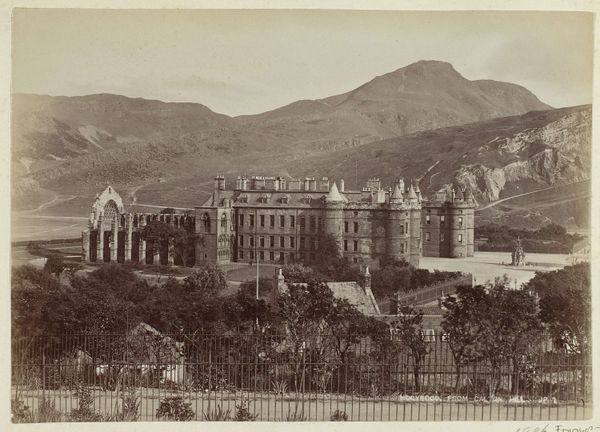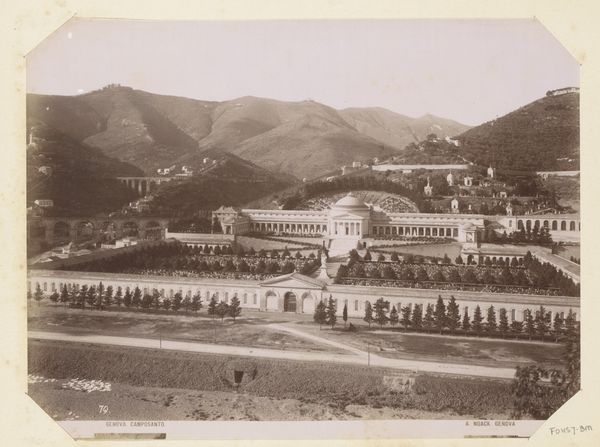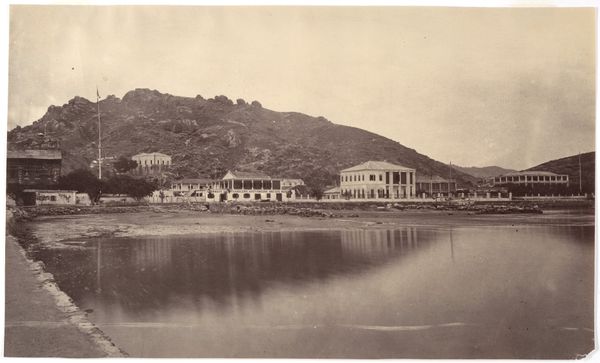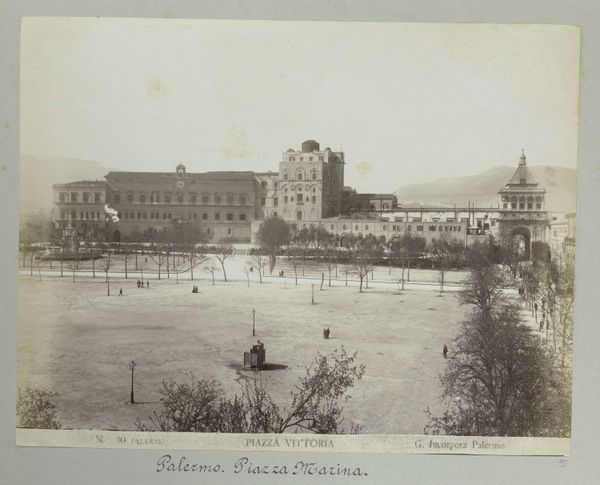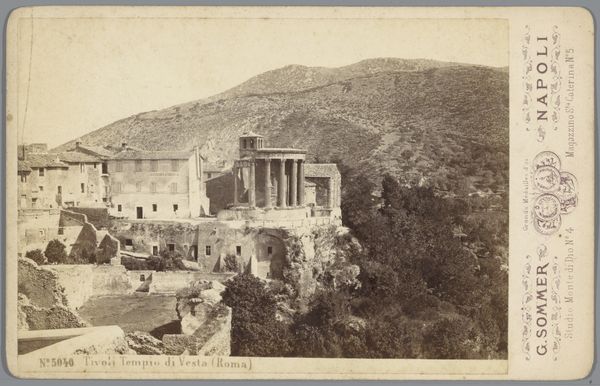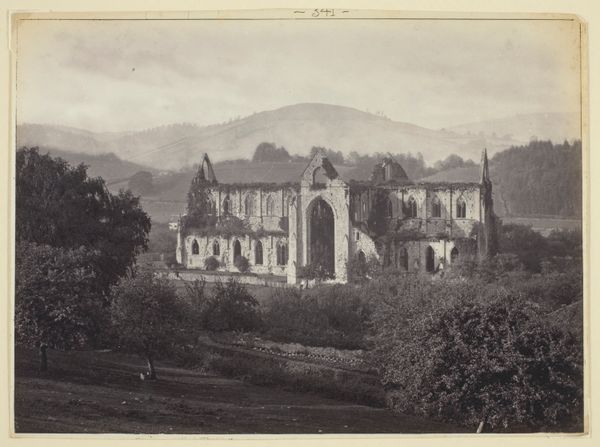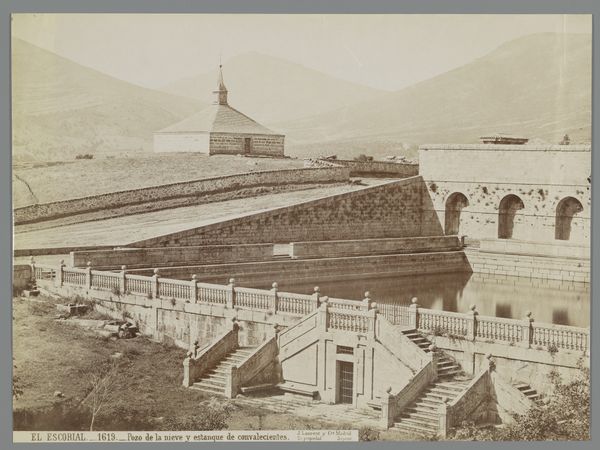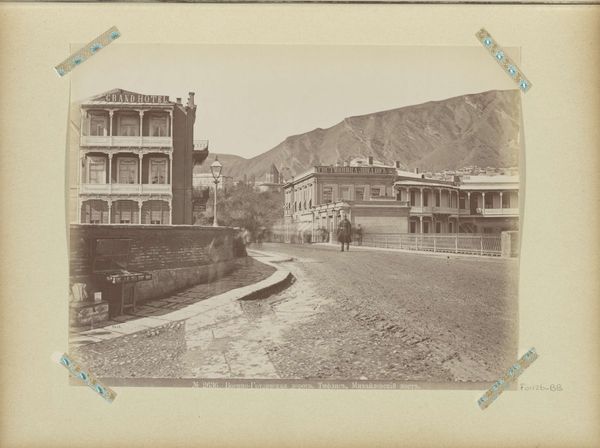
Holyrood Palace in Edinburgh, gezien vanaf Calton Hill c. 1870 - 1890
0:00
0:00
photography, gelatin-silver-print
#
landscape
#
charcoal drawing
#
photography
#
gelatin-silver-print
#
cityscape
#
watercolor
Dimensions: height 133 mm, width 205 mm
Copyright: Rijks Museum: Open Domain
Editor: Here we have "Holyrood Palace in Edinburgh, gezien vanaf Calton Hill" by James Valentine, taken sometime between 1870 and 1890. It's a gelatin-silver print, giving it this lovely sepia tone. I’m really struck by how the photographer used a relatively new medium to capture a very traditional subject. What do you see in this piece? Curator: I'm drawn to the material presence of the print itself. Consider the chemistry involved: silver reacting to light, fixed onto paper. It’s a material document of a specific time and place, mediated through industrial processes. Notice how the granularity of the print reveals the technology at work, a stark contrast to the romantic subject matter. Editor: That's interesting, because I was thinking about how romantic it feels – that stark contrast you mentioned! Do you think this mass-produced photography challenged traditional, handmade depictions of such iconic architecture? Curator: Absolutely. The rise of photography democratized image production and consumption. While traditionally only the wealthy could afford painted portraits or landscapes, now, through the mechanization of image-making, a broader audience could engage with depictions of power, of "high culture." But also consider the labour involved. Who were the technicians in the darkroom? What were their working conditions? This is an industrial product as much as an artistic one. Editor: So, you're saying the image’s significance lies not only in its subject matter, but in the context of its production and consumption in Victorian society? Curator: Precisely. This isn't just a pretty picture; it's a material object embedded in a network of social and economic relations, speaking to broader shifts in technology, class, and taste. Editor: I never thought about it that way. It's more than just a snapshot of a palace; it’s about the machinery behind the shot itself and what it reveals about that time. Curator: Exactly. Analyzing art through its material production opens up whole new avenues for interpretation.
Comments
No comments
Be the first to comment and join the conversation on the ultimate creative platform.
